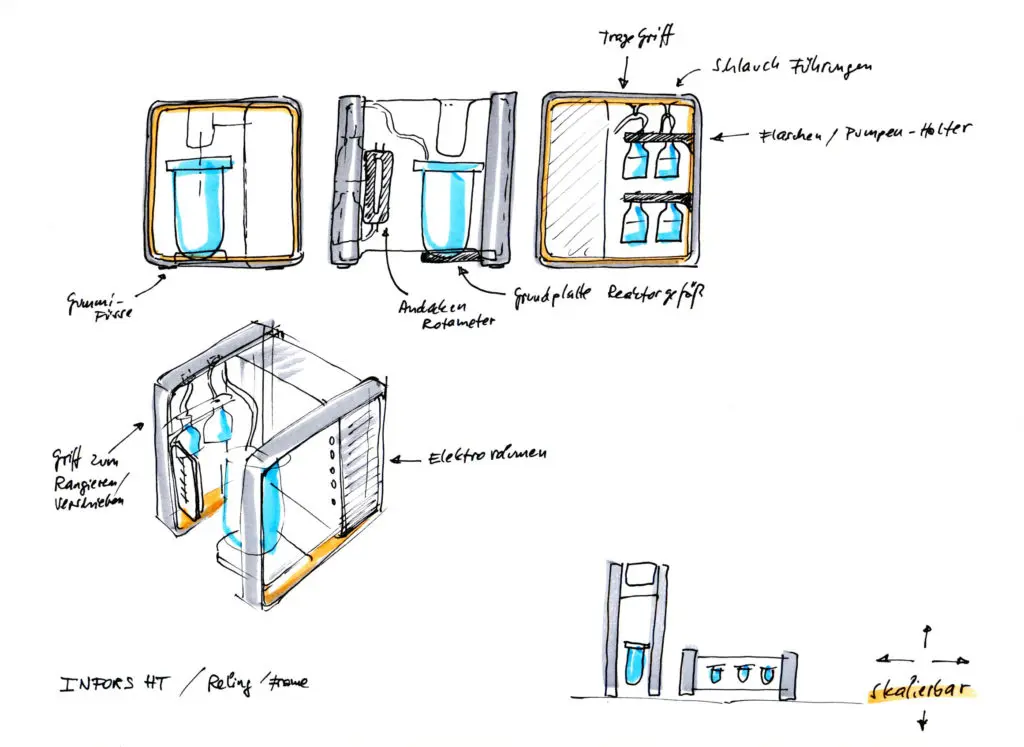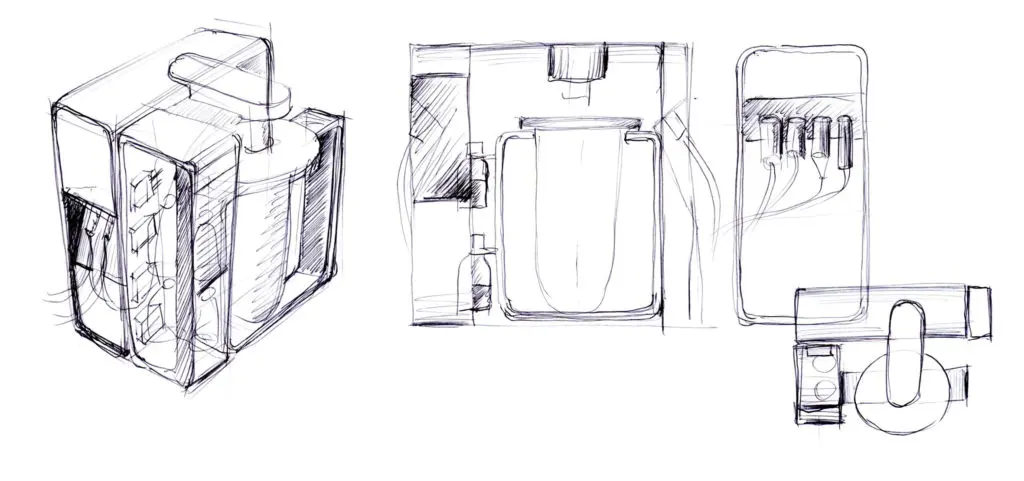Mr. Sperling, what exactly is industrial design?
Industrial design is an important part of product development—one that harmonizes all of the factors that affect the product. Functional shaping, usability, materials and production technology are all examples of very important issues surrounding design development as it has played out in the latest INFORS HT devices.
What do you mean by “functional shaping”?
Functional shaping covers more than just the design of a product. It also addresses the functionality and development process. As part of the Minifors 2 development, we devised a number of design elements to be used uniformly across a range of products. This included coding the port areas for probes, gas and water, improving tubing and cable management, and streamlining the shape of the housing to reach optimal hygiene requirements. We were then left with an innovative solution that not only enhances product quality, but also elevates the company’s brand identity and ultimately its market value.
Does that mean that good product design plays a critical role in how a company is viewed on the market?
Yes. Design allows us to convey the values of the product and of the company. That is why we believe it is important for design to be integrated into the corporate culture.
Can you explain your product design process?
The first step is to ascertain the precise definition of the task at hand and the objectives. These are generally derived from various product, corporate and market requirements. We dive in, familiarize ourselves, analyze, observe and draw conclusions relevant to the design. We then use this information to develop innovative design concepts.

In other words, you deliver a finished design concept, and the customer then implements it?
No, not quite. Customers are generally involved throughout the entire design process. Collaboration is key – the product management team, the design or development department and senior leadership all share their knowledge and experience which then shapes the quality of the design. Creative, interdisciplinary collaboration results in an inspiring dialogue, producing optimum results.
How does the end user of a device benefit from the design concept beyond the aesthetics?
If a product is well designed, it is logical to think that it will also be highly functional. In the case of the Minifors 2, we designed each individual component to help improve the functionality – delivering added value to the customer. The upgraded device layout increases usability. For example, the bioreactor and corrective agent bottles are portable – which assists autoclaving. Afterwards, the user simply mounts the vessel back on the base unit – without having to reconnect tubes or the temperature control system. Details like this simplify the process and save valuable time. The visual appeal and production concept showcases the quality expected from an INFORS HT bioreactor. Careful execution of the design details produces an overall Minifors 2 aesthetic that users can sense and associate with the INFORS HT brand. This ultimately reflects one of the company’s core values: vitalizing.

What challenges and trends in industrial design do you expect to see in the years ahead?
Technical limitations are almost a thing of the past, actually. But just because you can do something doesn’t mean you should. A good designer should be able to identify the worthwhile, value-generating and sustainable applications of technical innovations. Increasing digitalization is also a pivotal factor in design, of course. Effective design for instance, can help moderate growing complexity and make for an intuitive user experience. Last but not least, it has become imperative that businesses continue to innovate and develop sustainable design solutions with added value and identity to ensure they stay relevant in the market and remain ahead of the ever-increasing competition.
The illustrations featured in this article were kindly provided by Meyer-Hayoz Design Engineering. To learn more about design we recommend, visit their website.